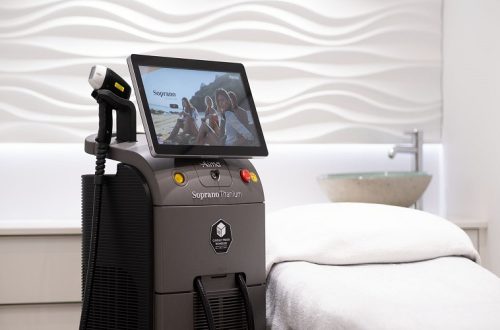In the world of printing, Direct-to-Film (DTF) printing has emerged as a revolutionary technology that is changing the way we think about garment decoration and custom printing. dtf printing combines the best features of various printing techniques, offering businesses and individuals a highly versatile and cost-effective solution for creating custom designs on a wide range of fabrics and materials. This article explores what DTF printers are, how they work, their advantages, and why they are becoming increasingly popular in the textile industry.
What is a DTF Printer?
DTF (Direct-to-Film) printers are specialized printing machines designed to transfer custom designs onto various materials, particularly fabrics, through a film-based process. Unlike traditional methods such as screen printing or heat transfer, DTF printers utilize a unique technique that involves printing designs onto a film, which is then transferred onto the desired material using heat and pressure.
DTF printers have become particularly popular in the garment printing industry due to their ability to print high-quality, vibrant designs on a variety of fabrics, including cotton, polyester, and even synthetic blends. This technology allows businesses to produce custom t-shirts, hoodies, bags, and other apparel items with ease and efficiency.
How Does DTF Printing Work?
The DTF printing process consists of several key steps:
-
Design Creation: The process starts with creating a digital design on a computer. This design can be created using popular graphic design software such as Adobe Illustrator or CorelDRAW.
-
Printing the Design: Once the design is finalized, the next step is to print it onto a special transfer film using a DTF printer. The printer uses a unique type of ink (usually a water-based ink) that is designed to adhere to the film. The printer lays down the design in full color, including intricate details and gradients.
-
Powder Coating: After the design is printed, a layer of adhesive powder is applied to the printed film while the ink is still wet. The adhesive powder helps the design adhere to the fabric during the transfer process. This step is crucial in ensuring the durability and quality of the final print.
-
Curing: The film with the adhesive powder is then passed through a curing process, where it is heated to melt the powder and bind it to the design.
-
Heat Transfer: Finally, the printed film is placed on the fabric or material, and heat and pressure are applied using a heat press. The heat transfer process causes the design to bond permanently with the fabric, resulting in a vibrant and durable print.
Advantages of DTF Printers
-
High-Quality Prints: DTF printers can produce highly detailed, full-color prints with smooth gradients and crisp lines, making them ideal for complex designs and photographic images.
-
Versatility: One of the biggest advantages of DTF printing is its ability to print on a wide variety of materials, not just garments. It can be used to print on a range of fabrics, including cotton, polyester, and even non-fabric materials like leather, wood, and plastic.
-
Cost-Effective: DTF printing is a more affordable solution for small-batch or custom printing compared to traditional methods like screen printing, which requires costly setup and equipment. It allows businesses to print smaller runs of garments without the need for extensive setup costs.
-
Durability: DTF prints are known for their durability and resistance to washing and fading. The prints remain vibrant and long-lasting, even after repeated washing, which is a significant benefit for businesses in the fashion and merchandise industries.
-
No Need for Pre-Treatment: Unlike other printing methods such as DTG (Direct-to-Garment), which require pre-treatment of fabrics before printing, DTF printing does not need pre-treatment. This simplifies the process and saves time.
-
Eco-Friendly: DTF printers use water-based inks that are more environmentally friendly than solvent-based inks used in some other printing technologies. The process also generates minimal waste compared to traditional methods.
Applications of DTF Printing
DTF printers are used in various industries, including:
-
Apparel and Fashion: DTF printing is widely used for creating custom t-shirts, hoodies, sportswear, and fashion accessories.
-
Merchandising: It’s an excellent option for creating promotional items like branded merchandise, tote bags, caps, and more.
-
Personalization: DTF printers are perfect for creating one-off personalized items such as custom gifts, team uniforms, or event apparel.
-
Home Décor: Some DTF printers can even be used to print on non-fabric materials like canvas, allowing businesses to create custom home décor items like pillowcases, wall art, and more.
Challenges and Considerations
While DTF printing offers many advantages, it’s not without its challenges. Here are a few things to keep in mind:
-
Initial Investment: Although DTF printers can be more cost-effective for small batches, the initial cost of the printer and associated equipment (such as heat presses and curing stations) can be substantial.
-
Learning Curve: DTF printing may require some time to master, especially for those unfamiliar with the technology. Ensuring consistent quality across different materials and designs can take practice.
-
Material Limitations: While DTF printing is versatile, certain materials may still pose challenges, particularly those with a highly textured surface.
Conclusion
DTF printers represent a significant advancement in the world of custom printing, offering a flexible, high-quality, and cost-effective solution for a wide variety of applications. Whether you’re a small business owner looking to create custom garments or a hobbyist exploring new printing technologies, DTF printing can offer you endless creative possibilities with excellent durability and vibrant results.




